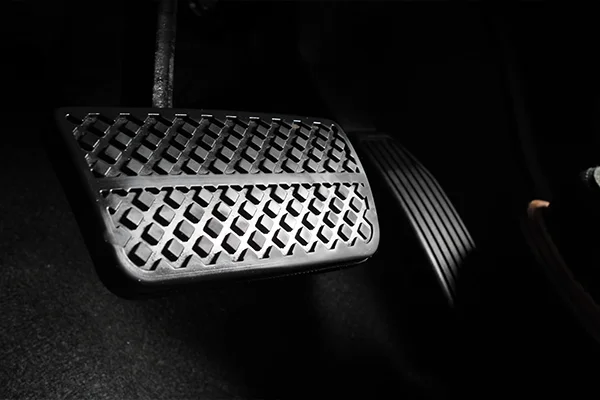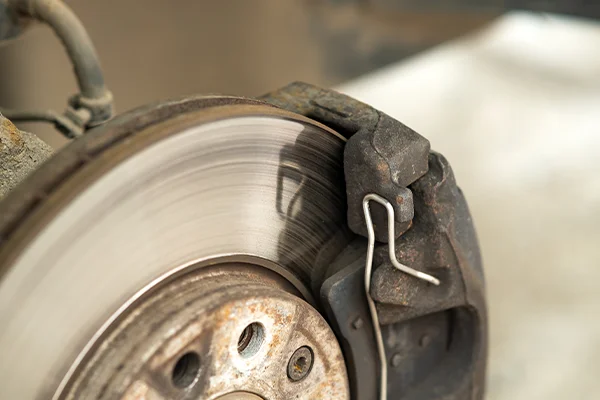The Critical Maintenance Step That Keeps You Safe | Arvada Square Auto – ArvadaSquareAuto.com
When most people think about brake maintenance, they picture worn-out pads, squeaky rotors, or maybe a brake warning light. But there’s a silent MVP in your braking system, brake fluid. And like engine oil or transmission fluid, it needs to be changed regularly to ensure your vehicle stops as well as it starts.
At Arvada Square Auto, we believe informed drivers are safer drivers. So, let’s dive deeper into why brake fluid flushes are essential, how fluid breaks down, what testing methods exist, and how our local repair shop’s advanced approach delivers a safer, more reliable braking experience.

Brake Fluid 101: What It Does & Why It Matters
Brake fluid is a non-compressible hydraulic fluid used in modern disc and drum brake systems. When you press the brake pedal, the master cylinder pushes fluid through lines to the brake calipers or wheel cylinders, which then apply pressure to the pads or shoes, and that engagement creates a slowing and ultimately a stopping of the vehicle.
It’s engineered to:
- Remain stable under extreme heat and pressure
- Maintain consistent viscosity in all climates
- Prevent internal corrosion
- Transmit pressure evenly across all four wheels
In short: no brake fluid = no brakes.

Why Brake Fluid Degrades Over Time
1. Hygroscopic Nature
Brake fluid is hygroscopic (DOT 3, 4, and 5.1), meaning it absorbs water from the atmosphere over time, even in sealed systems. Another type of fluid, DOT 5 however, is silicone-based and hydrophobic. Tiny amounts of moisture can enter through rubber hoses, joints, and the fluid reservoir cap. When brake fluid has already absorbed water, heat from braking can cause that water to vaporize into steam, creating bubbles in the lines, this leads to a spongy pedal or brake fade. That hydraulic feature of brake fluid diminishes with water absorption which is a natural occurrence over time.
This moisture:
- Lowers the boiling point of the fluid
- Increases corrosion in brake components
- Alters viscosity, reducing pressure consistency
2. Thermal Breakdown
Under repeatedly high braking loads, like in mountain driving or heavy traffic, fluid can heat up significantly. This degrades its chemical properties and contributes to vapor lock, especially in older or lower-grade fluids.
3. Contaminant Accumulation
As the system operates, the fluid picks up:
- Microscopic metal particles from component wear
- Rubber particles from hoses and seals
- Chemical byproducts from degraded fluid
This debris can clog small passageways in ABS modulators and master cylinders, making braking slower, uneven, or dangerously unpredictable.
Fluid Testing: More Than Just Color
Many drivers (and even some master technicians) assume brake fluid only needs changing if it’s dark. That’s a misconception! While discoloration can signal degradation, it isn’t always visible or reliable. Brake fluid can still look clean but perform poorly.
At Arvada Square Auto, we go beyond visual checks with two scientific methods:
1. Boiling Point Test (Gold Standard)
We measure the actual wet boiling point of your fluid. DOT 4 fluid must maintain at least:
- 446°F dry boiling point
- 311°F wet boiling point (after moisture absorption)
If the measured value falls below this threshold, fluid replacement is critical for safety.
2. Copper Strip Test
This test detects copper corrosion from brake lines, which indicates overall fluid degradation and internal wear. High copper levels suggest the fluid is chemically “worn out.”
While not as precise as a boiling point test, strip testing is a fast and inexpensive diagnostic tool.
In many cases the age of the fluid is usually a good indicator to determine if a brake fluid service is required. Many customers prefer the regular maintenance of fluid rather than the added costs often involved with testing and diagnostics.
Why We Use DOT 4 Fluid, Only
At Arvada Square Auto, we exclusively use DOT 4 fluid for all brake flushes, unless the manufacturer specifies otherwise.
Why DOT 4?
- Higher boiling points than DOT 3
- Better moisture resistance
- Improved performance in high-demand conditions
- Required by most modern vehicles with ABS and ESC systems
No additives or modifiers are permitted by law
Brake fluid is regulated by the U.S. Department of Transportation, and brands must meet strict specifications. That means marketing claims aside, what matters most is proper fluid type, age, and handling, not brand name.
Equipment Makes the Difference: How We Flush Brake Fluid at Arvada Square Auto
Not all fluid flushes are created equal. Some shops still use manual bleeding or gravity bleeding, which can leave behind up to 50% of the old, contaminated fluid.
At Arvada Square Auto, we’ve invested in professional-grade fluid exchange machines that:
- Create a sealed, pressurized loop to fully evacuate old fluid
- Prevent air intrusion or system contamination
- Evenly replace fluid across all four wheels
- Maintain system pressure to protect sensitive ABS components
The result? A safer, cleaner, more effective brake system, and better long-term reliability for your vehicle. We partner with the leading fluid and chemical provider, Wynn’s, for all our braking fluid and equipment needs.
When Should You Get a Brake Fluid Flush?
There’s no one-size-fits-all answer, but here’s what we recommend:
| Driving Condition | Recommended Interval |
| Normal daily driving | Every 2 years or 30,000 miles |
| Mountain / downhill driving | Every 18 months |
| Towing or heavy loads | Every 18 months |
| After ABS component replacement | Immediately |
| During major brake service | Every time |
Never skip fluid flushes just because the brakes “feel fine.” Degraded fluid may still operate under light braking but can fail under pressure, exactly when you need it most.
The Real Benefits of Regular Brake Fluid Flushes
- More responsive braking
- Reduced risk of vapor lock
- Avoids costly ABS repairs
- Extends component life
- Greater peace of mind during hard stops
At Arvada Square Auto, we believe this is one of the smartest long-term maintenance investments you can make for your vehicle. Each year there are roughly 40,000 auto-related fatalities in the USA per the National Highway Traffic Safety Administration (NHTSA), and we aim to ensure that customers who trust Arvada Square Auto are not a part of that statistic.
Real-World Example: Why It Matters
A customer recently brought in a late-model SUV with a complaint of inconsistent braking on mountain roads. The fluid “looked fine,” but our boiling point test revealed it was well below the safe threshold.
After a complete flush with DOT 4 fluid, the braking response improved dramatically, and the customer left with confidence, knowing their system was road ready. Just as satisfying, the customer ended up paying a bill only a fraction of what was expected because no braking system components needed replacement.
Why Choose Arvada Square Auto?
- High-end fluid exchange machines
- DOT 4-only policy for maximum performance
- Scientific fluid testing, not guesswork
- Friendly, ASE-certified techs who explain everything
- Trusted by the Arvada community for over 40 years
We don’t sell flushes just to sell them, we recommend them when they’re truly needed, and we show you why.
Schedule Your Brake Fluid Test or Flush Today
Not sure when your last brake flush was? Want your fluid tested? Come see us at Arvada Square Auto. We’ll check your fluid, explain the results, and help you decide what’s best for your safety and your car. Trust your local repair shop – we’re here to serve you!
Visit ArvadaSquareAuto.com or give us a call to book your brake fluid inspection today.
